The Ranunculus or buttercup is a spectacular springtime flower that more than deserves the epithet of the “rose of spring”. Its trademark color is a buttery yellow but today it’s available in a wider range of hues than ever. In this post, you’ll learn everything you need to know to grow your own ranunculus without stress. Ready when you are!
Ranunculus flowers are mostly perennials, though in areas with harsh winters they grow as annuals or biennials.
They bloom in spring with the blooms lasting up to seven weeks. Their often-lustrous petals create mirror-like reflections that draw upon them unequivocal attention.
Ranunculus Meaning
In Latin, ranunculus means “little frog.” In the wild, the plant often grows near lakes, ponds, and rivers, which explains this rather strange name that otherwise has little to do with the shape of the flower itself.
The other name of the flower, “buttercup” has quite different origins. It may derive from the false belief that the plant makes butter yellow. There’s no scientific basis for this, though. Cows don’t really like buttercups.
Buttercups also make an appearance in a Native American Legend, in which they become the new eyes of Coyote.
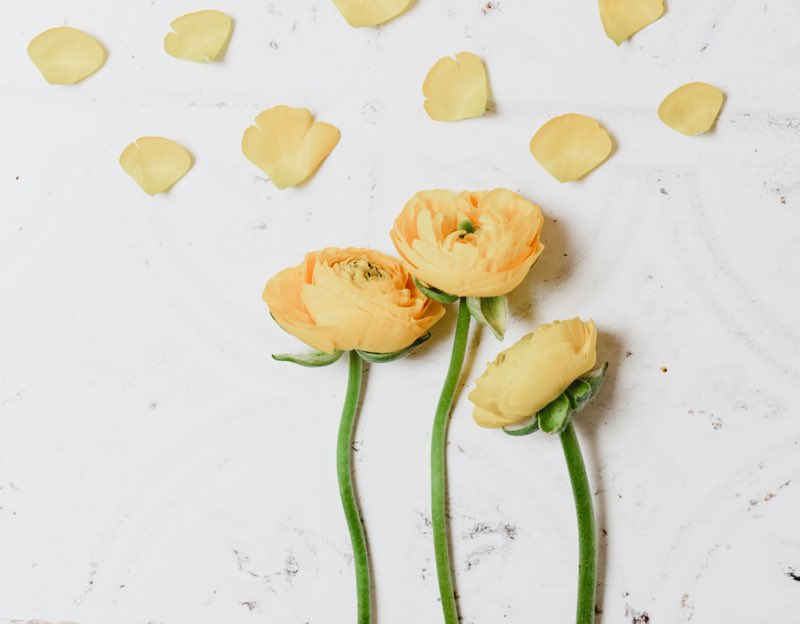
In the legend, Coyote was tossing his eyes up in the air before catching them again—until Eagle stole them. The blinded Coyote made new eyes from the buttercup flower.
Had you lived in Victorian times, you would have given ranunculus flowers to someone you had a crush on. Back then, these flowers signified that you were quite taken with someone.
Most of all, ranunculus symbolizes radiant charm and attractiveness. In other words, they’re the kind of flowers you’d give to someone special to express your strong feelings or admiration for them.
Ranunculus Color Meanings
It’s worth noting that different ranunculus flower colors have acquired a few other meanings over time.
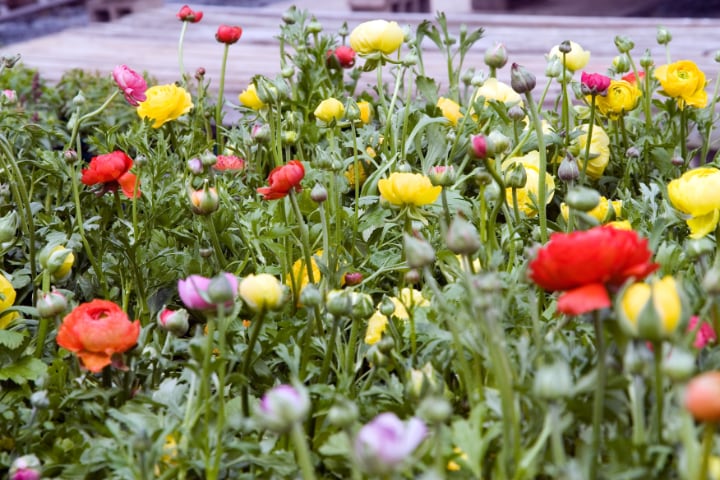
- Pink ranunculus symbolizes passion and femininity and can be the perfect gift for a woman you have a romantic interest in.
- Red ranunculus symbolizes love and romance and is a great flower to give to someone you already have a strong relationship with.
- Orange ranunculus conveys cheerfulness, brightness, and positivity. It’s a great flower vase that can brighten any room.
- Yellow ranunculus symbolizes positivity and joy and makes for a happy gift.
- Purple ranunculus conveys respect and esteem and, like most purple flowers, has royal connotations. It’s a great gift for a special person in your life that you look up to.
- White ranunculus symbolizes purity and elegance and is a suitable gift for a loved one if the two of you are at the beginning of a relationship.
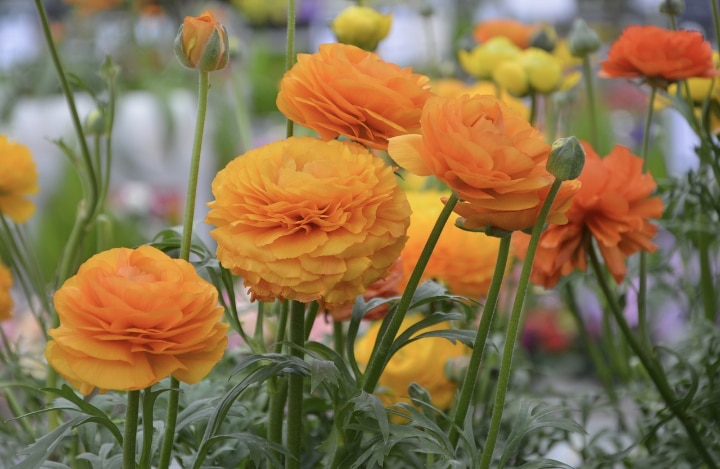
Top Ranunculus Varieties
Ranunculus varieties range from 10 to 24” in height and come in a delicately beautiful palette of colors including pink, purple, orange, red, yellow, and white. They’re a versatile choice for many garden designs.
Most varieties bloom in spring or summer. Explore now some of the most prized varieties that you can grow in your garden or indoors.
1. Ranunculus Acris (Meadow Buttercup)
The Meadow Buttercup grows on damp meadows and pastures, hence its common name “meadow buttercup.”
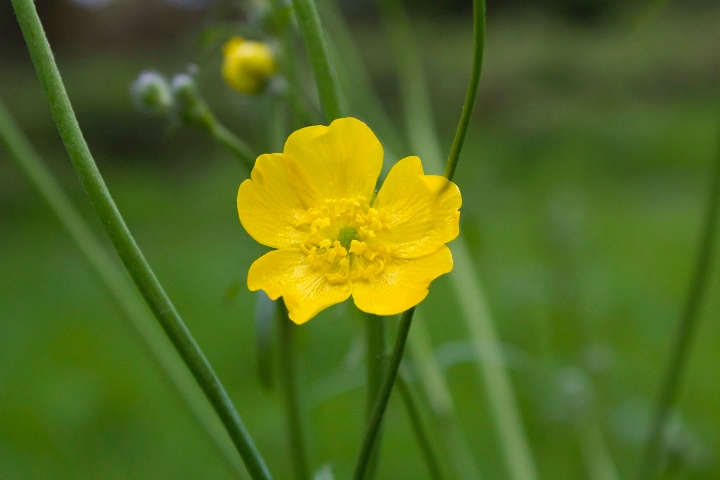
It’s one of the tallest buttercups varieties, growing up to 3’ in height. It blooms into rich yellow flowers perched atop graceful stems.
A word of caution: This plant’s acrid juice can cause blisters; all parts of the plant are poisonous!
2. Ranunculus Asiaticus (Persian Buttercup)
Another buttercup variety widely grown today, Ranunculus asiaticus is native to Asia Minor. It has vibrant, fern-like leaves and can grow to 12” in both height and width.
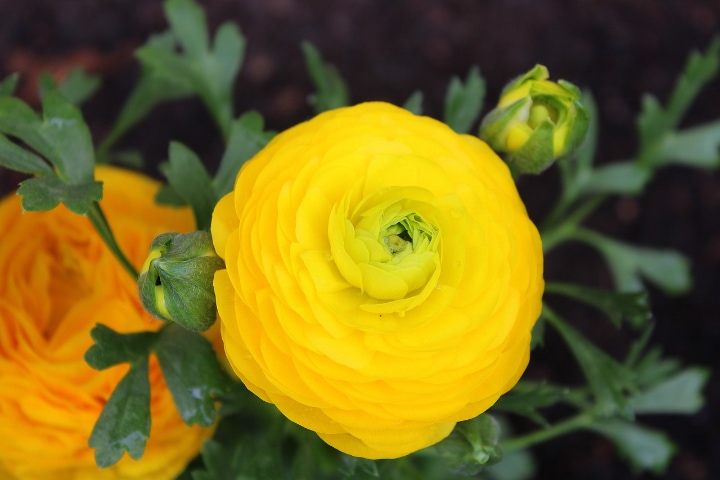
Each flowering stalk can bear up to four double blossoms. Also called Persian Buttercup, it can be yellow, white, red, pink, orange, and mixed.
It grows well in pots and is a great choice for flower arrangements.
3. Ranunculus Bulbosus (Bulbous Buttercups)
A common sight on British meadows and pastures, this one has a round base and grows larger than most other buttercups. Most varieties are yellow.
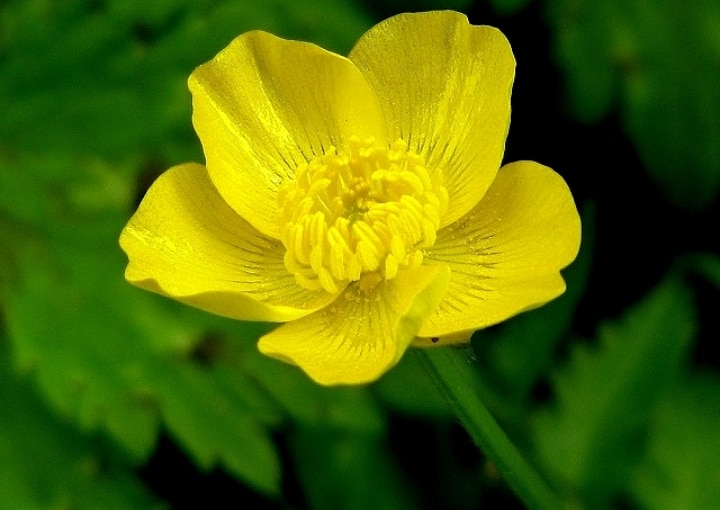
4. Ranunculus Repens (Creeping Buttercup)
Noted for its snowflake-shaped golden or vibrant green leaves, the Creeping Buttercup doesn’t grow too tall but it tends to spread widely. The petals and the centers both wear bright yellows.
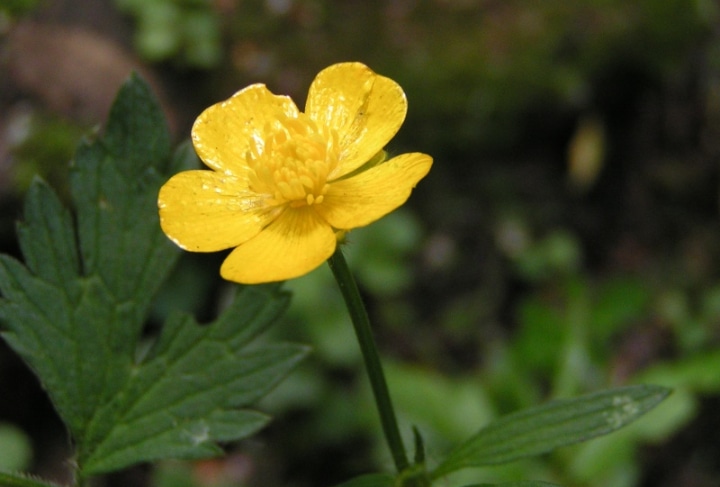
5. Ranunculus Fascicularis (Early Buttercup)
Early buttercups bloom in spring and can grow in areas with less than ideal light. Flowers tend to be an intense yellow, with long, thin petals that lend them a delicate appearance.
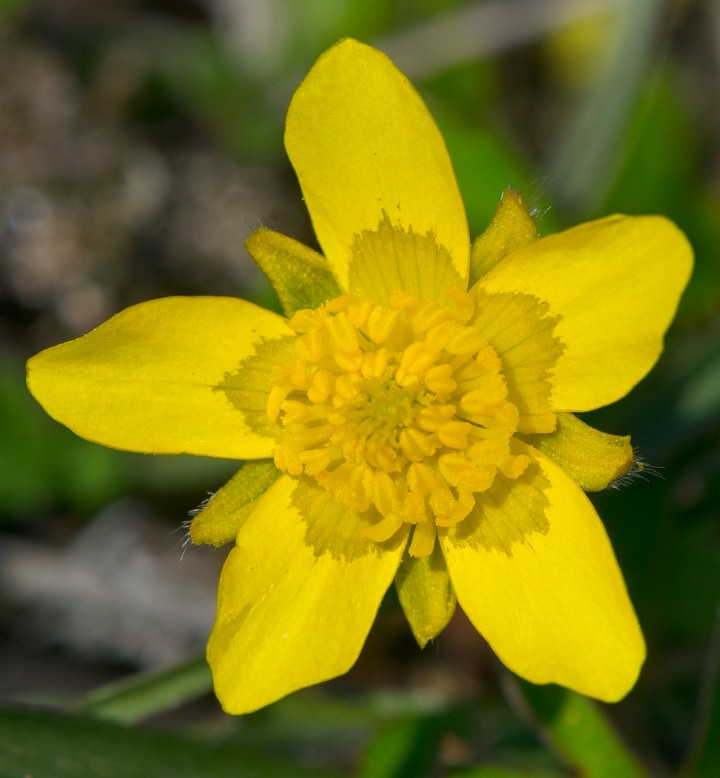
They are a common sight in many woods and forests throughout North America.
6. Ranunculus Septentrionalis (Swamp Buttercup)
Frequently growing near water, this variety has small flowers that bloom on long stems of up to 1’. Its sprawling leaves make it a great flower to grow near an artificial pond or other water feature in your garden.
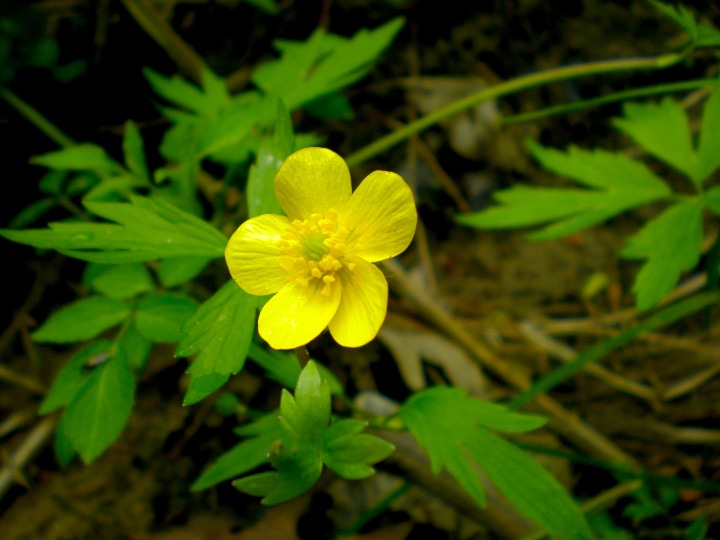
Tip: You don’t have to worry all that much about overwatering this one, though it’s still best to keep the soil moist rather than wet.
7. Ranunculus Aconitifolius (Aconite Leaf Buttercup)
With its tall growth and vigorous spread (up to 2’), the Aconite Leaf Buttercup is one of the most beautiful white ranunculuses you can grow in the garden.
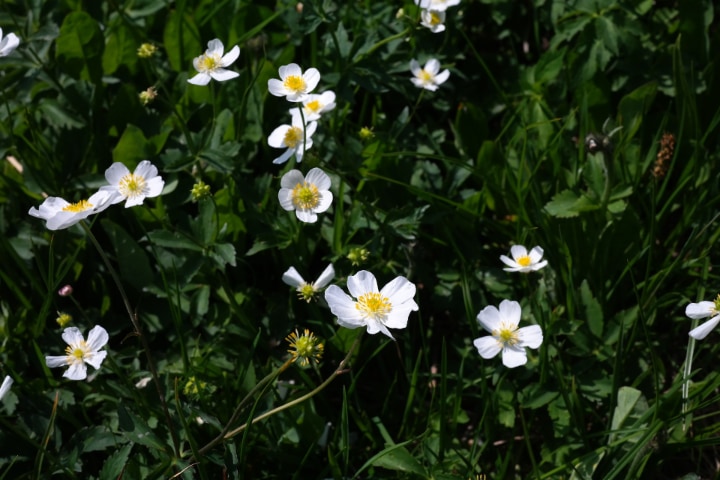
It’s a hardy plant with hairy leaves that can grow in most types of soil. If you’ve never grown a buttercup before, you may want to start with this one.
8. Ranunculus Abortivus L. (Kidneyleaf Buttercup)
Don’t let the name dishearten you—this buttercup takes its name from its kidney-shaped leaves.
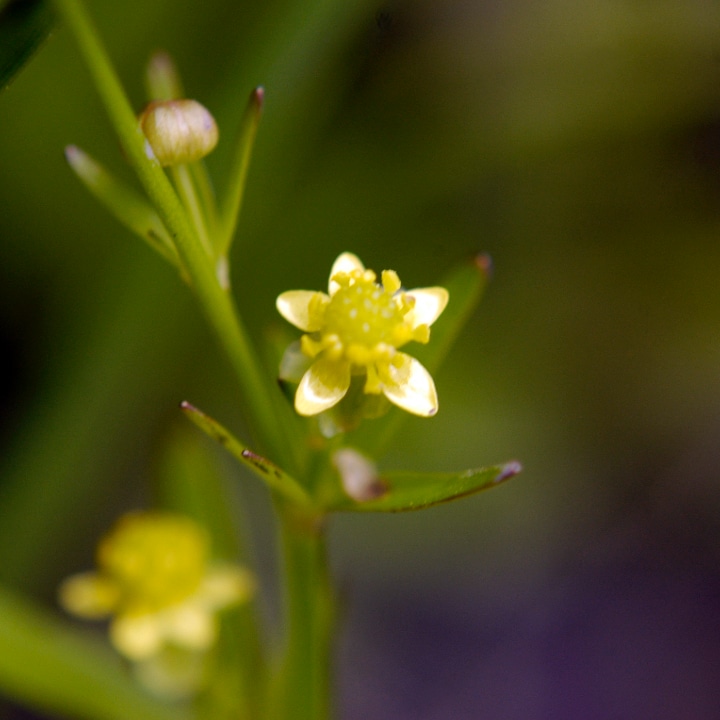
It has dainty flowers that grow on long, ridged stems. If you’re looking for a more unusual looking ranunculus, this could be just right for you.
9. Ranunculus Californicus (California Buttercup)
This unique ranunculus flower has up to 17 petals, which is more than three times the number of the average buttercup.
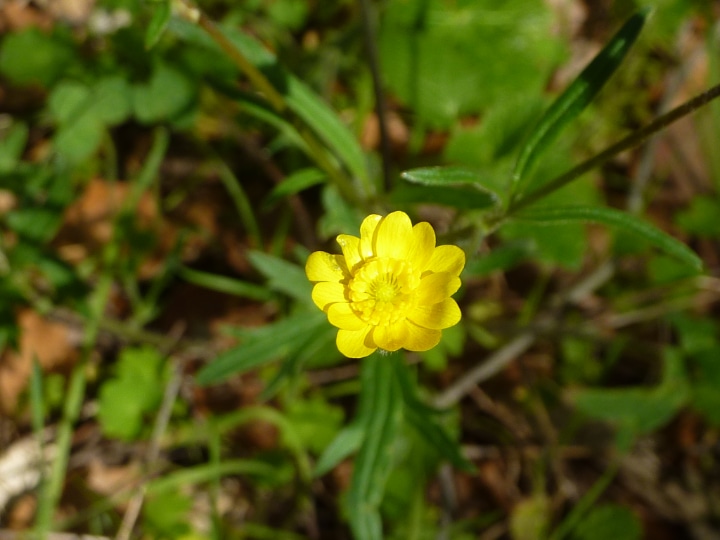
But it’s not just about the flowers—you’ll probably fall for its glossy yellow petals. This may not be the cheapest variety to buy, but it’s worth the expense.
10. Ranunculus Hydrocharoides (Frogbit Buttercup)
Some ranunculuses can grow in water or wetlands, and frogbit buttercups are one of them.
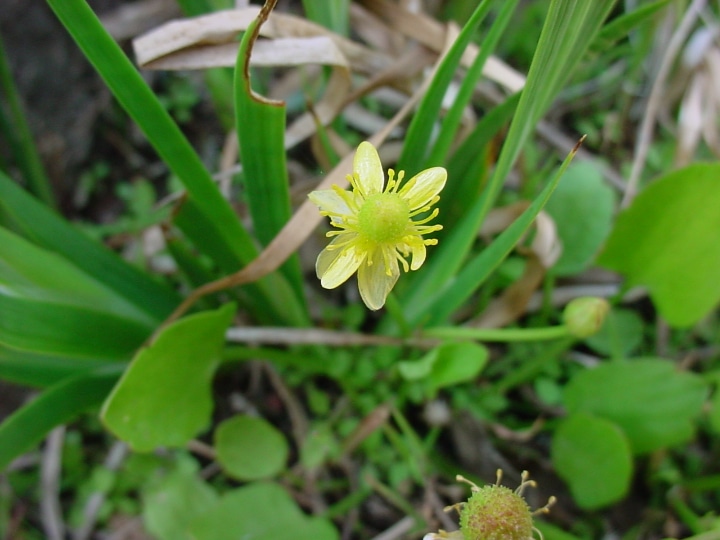
This aquatic plant has shiny leaves and yellow petals. It can be a great addition to your pond or wet garden.
11. Ranunculus Glaberrimus (Sagebrush Buttercup)
Another beautiful yellow variety, the sagebrush buttercup grows gracefully on sturdy stems. It wears the characteristic yellow of most buttercups.
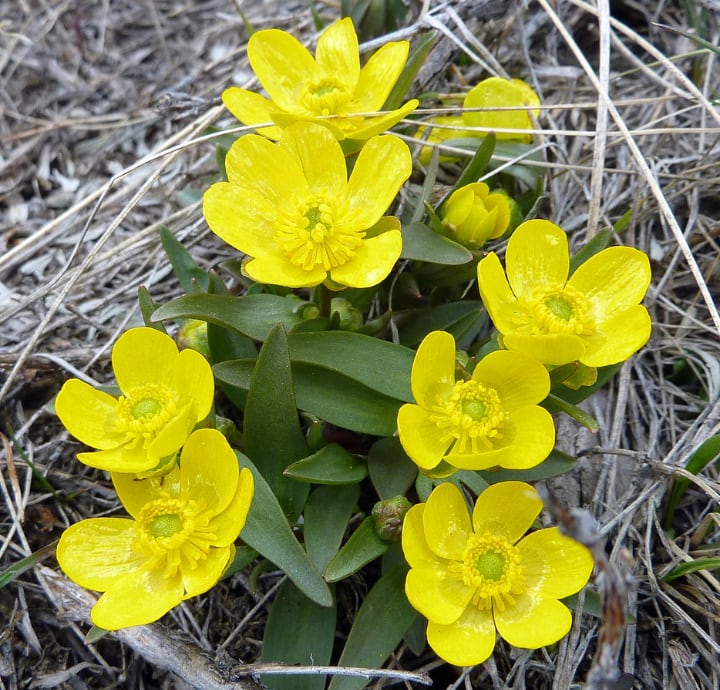
12. Ranunculus Orthorhynchus (Straightbeak Buttercup)
The rather unusual shape of the straightbeak buttercup can make it a special sight in any garden. It grows best in moist soil. A tall variety, it can reach 3’ in height.
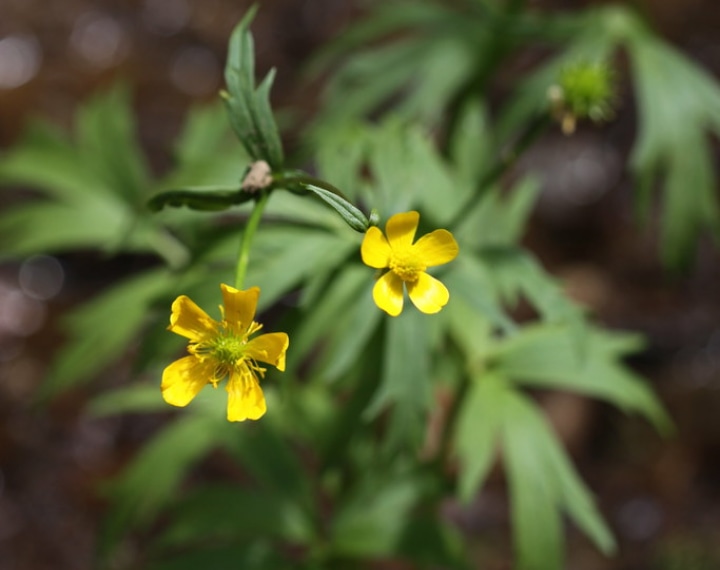
How to Grow Ranunculus the Easy Way
Ranunculus bulbs are called tubers or corms. They look a lot like claws but don’t let that dishearten you—beautiful flowers can grow out of them.
They are dry and hard but soften once you put them in the ground as they absorb moisture.
Important: When planting them, don’t soak them as you would other plant bulbs as that may damage them.
Growing Ranunculus in Cold Climates
Ranunculuses can grow in cold climates provided you plant them in the spring. The downside is that they won’t flower until mid-summer or later, depending on the time of planting. They usually take up to 3 months to flower.
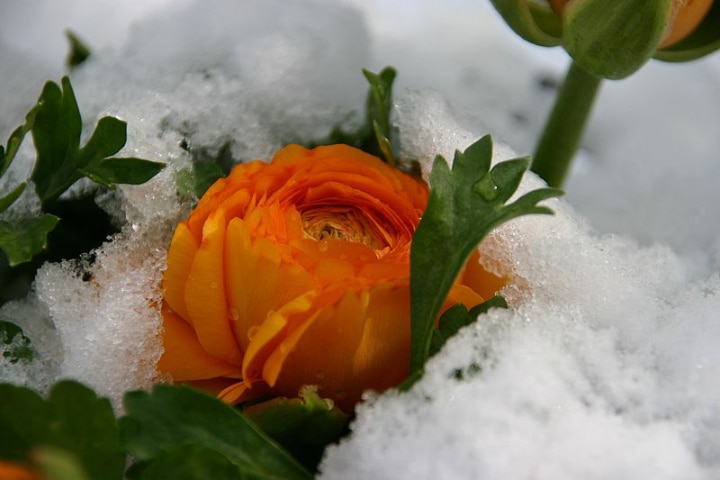
If you want to enjoy the blooms sooner, follow the instructions for planting them in containers indoors and then move the pots outside in spring. It’s all pretty simple, really.
The thing to remember is that this flower is not cold hardy. The ranunculus season is from late spring to mid-summer, with a peak around May/June.
Planting Ranunculus Outdoors
Do you live in a warm climate with mild winters and long springs? You can plant most varieties in the fall.
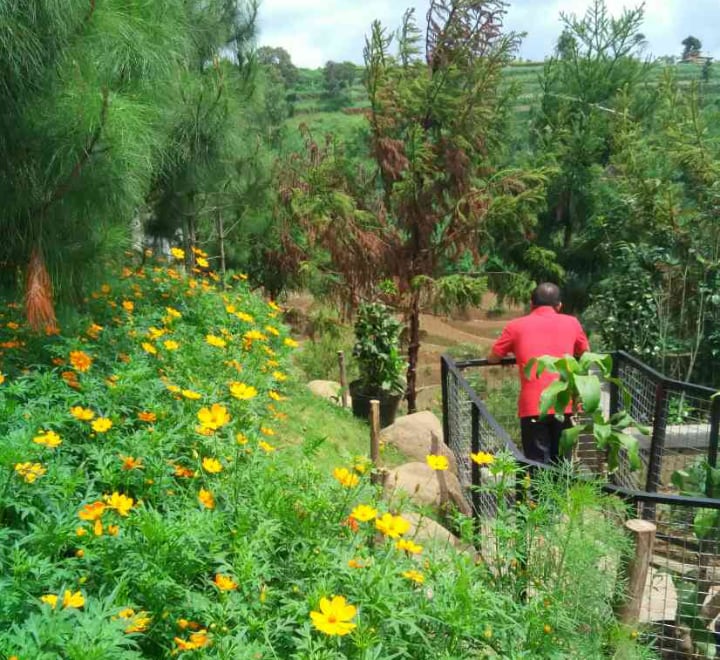
If you’re not sure about this, better plant them after the last frost, in early spring. You can also start ranunculus indoors in pots—more about that in a bit.
Keep in mind that the bulbs take around 90 days after planting to grow into flowering plants. Planting them in the fall can make them bloom sooner.
What’s more, it can extend the duration of their blooms by two weeks. Either way, to get the most flowers per bulb, choose large or very large tubers that you can plant in groups.
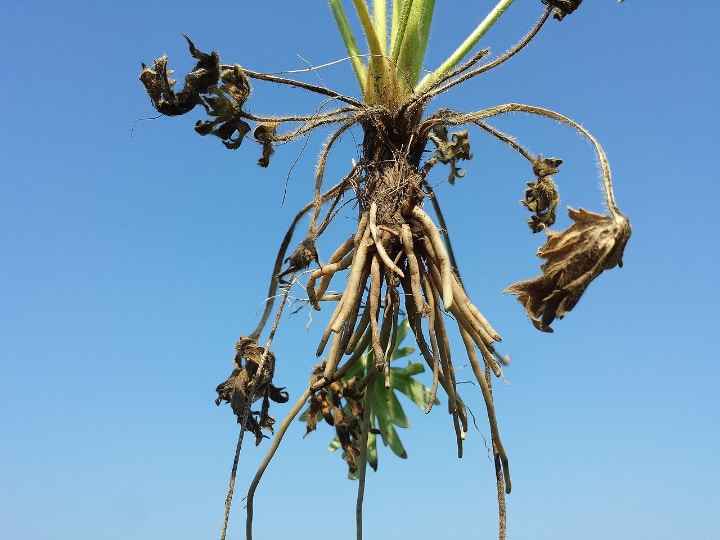
- Choose a sunny spot and ensure the soil has good drainage. Shade, wetness, and excessive warmth will kill the plant.
- You want to plant the corms with the pointed end down and 2” deep. In terms of spacing, you want at least 4” between normal tubers and twice as much for extra-large varieties.
- Water well after planting and add a normal layer of mulch to help the soil retain moisture. After that, don’t water for at least two weeks or so, until the sprouts appear.
- If you get mild winters and want to grow ranunculus as perennials, don’t cut the foliage after the flowers drop. Let the foliage die naturally and let the bulbs enter dormancy in the ground.
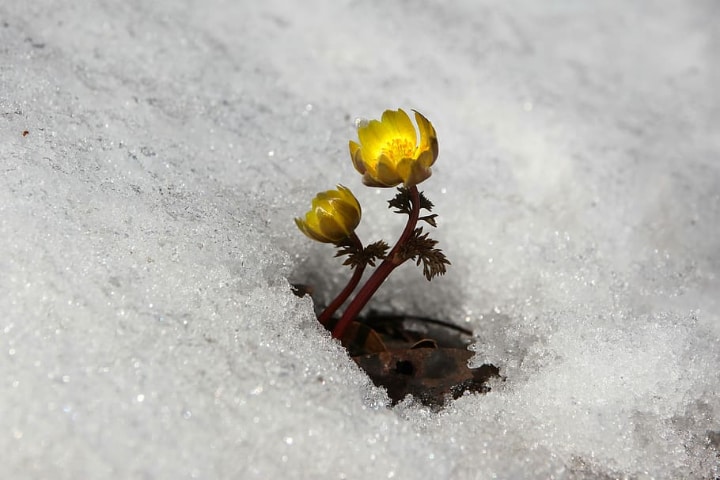
Good to know: Dormant roots are susceptible to rot if the ground is moist, but it’s worth trying to grow this plant as a perennial at least once.
Grow Ranunculus from Seed
Can you? Yes you can, usually at a lower cost than buying bulbs. But you do have to sow thickly because most seeds may not germinate.
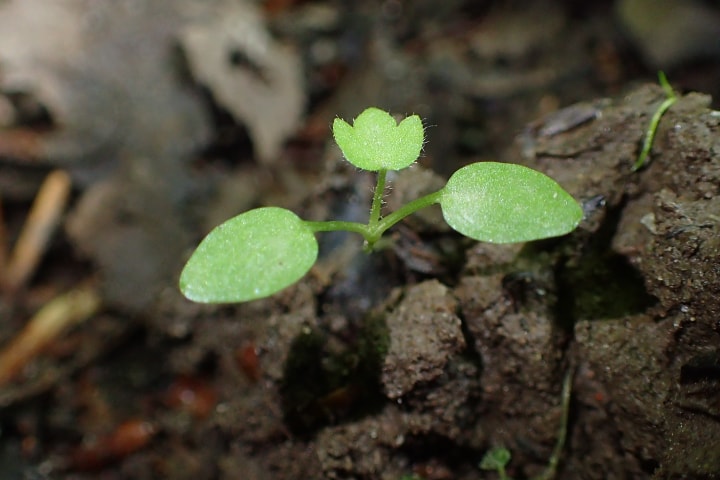
- Get started in late winter. Prepare a peat-based starting mix and add your seeds to it. The seeds should germinate within 30 days.
- During this time, keep the soil temperature around 50°F to promote germination.
- When the seedlings appear, increase the temperature to around 55°F to speed up their development and then plant them in early spring.
- When growing ranunculus from seed, remember that you’re treating the plants as annuals.
Growing Ranunculus in Pots
Do you live in an area with harsh winters or very hot summers that make growing this flower in the garden difficult? You can grow it in pots without much hassle.
Growing ranunculus indoors is not hard—not even for beginners. Apart from bulbs, you’ll need pots with good drainage—make some extras holes at the bottom if needed—and a good general potting mix that promotes drainage.
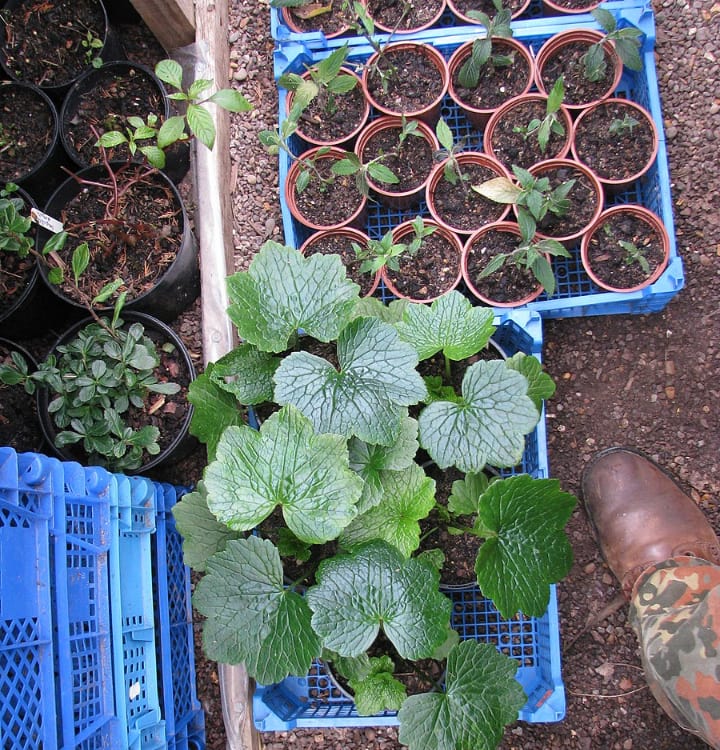
This plant doesn’t need very large pots. But keep in mind that some varieties can be a lot taller than others. It’s better to give them plenty of space than err on the side of caution.
Here are some tips to consider:
- Plant the bulbs 2” deep and with the claw up. Also, it’s important to space the bulbs properly—put at least 4” between them.
- Water immediately after planting.
- This flower grows best in pots when it receives full sun throughout the day so place them on the windowsill before a south-facing window.
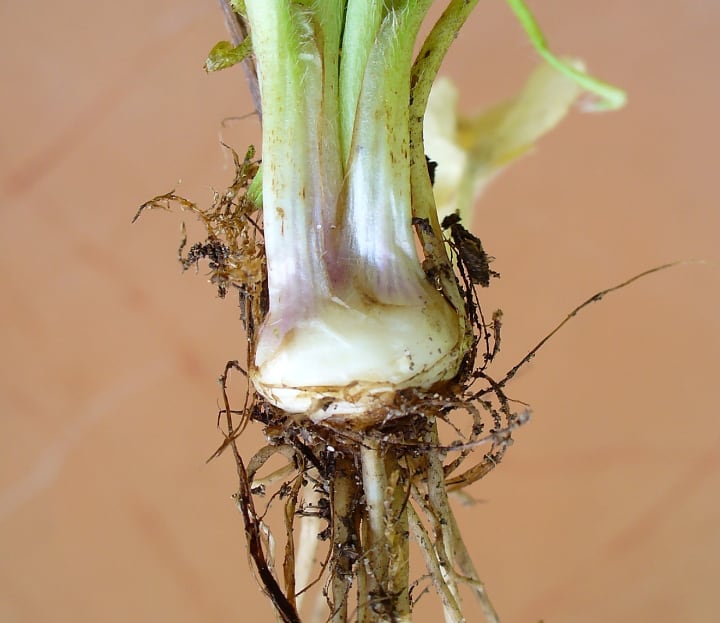
Ranunculus Care
Buttercups like growing in meadows, woods, marshes, other places. In other words, these flowers are not fussy—they only have some basic requirements.
Meet these and you can grow them with relative ease. So, what should you pay attention to?
Soil
Ranunculus likes loamy soil. If you got heavy soil, add to it some peat moss. Some gardeners prefer to grow the flower in raised beds.
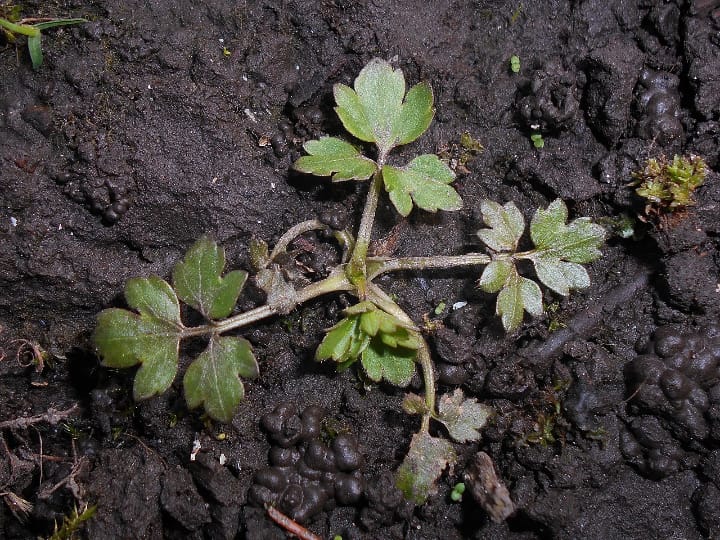
If you’re planting it as a perennial, you may also want to add some bone meal in the hole.
Tip: Make sure an inch or so of soil covers the claw end, which, by the way, should point down!
Light
Ranunculus needs full sun to thrive—it’s one of the single most important planting factors you need to consider.
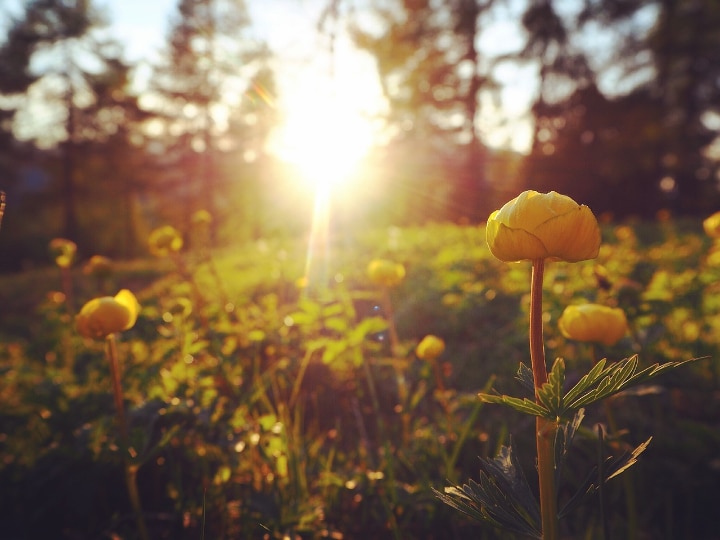
Free up some garden space if needed to ensure the tubers get full sun from day one. As noted, buttercups grown in pots should ideally sit before a south-facing window.
Temperature
When it comes to the temperature, there’s a bit of a catch—these flowers don’t like very hot summers. They thrive in cooler weather around 55°F and like cool summers too.
If you live in a very hot area, you may experience difficulties growing this plant. But then you can always grow them indoors in containers instead.
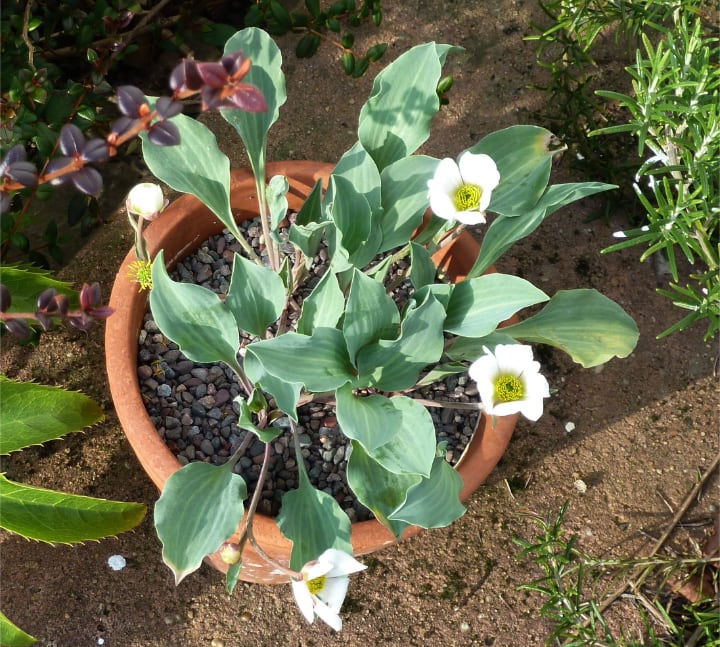
Watering
With the exception of aquatic and semi-aquatic varieties, buttercups don’t like to grow in moist soil.
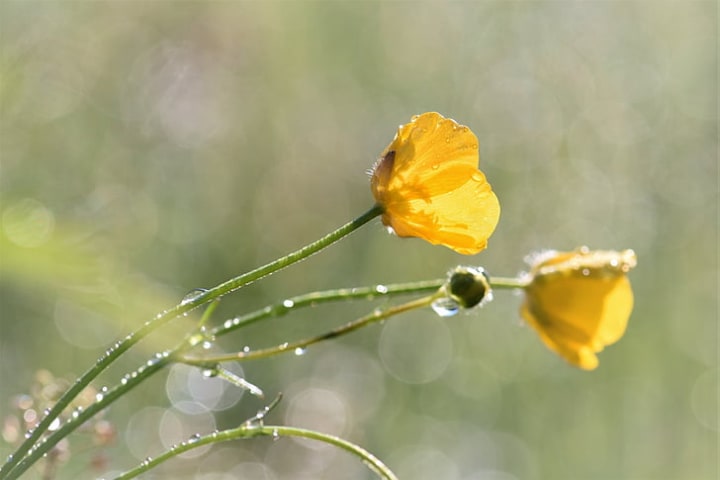
Water the bulbs when you plant them and then water again only when growth appears. While established plants are growing, water them sparingly.
Fertilizer
Most buttercups don’t need much fertilizing, but you do want to add to the planting area mulch or compost.
Tip: For the bulbs, use a half-strength balanced fertilizer when the plant is growing.
Wintering
Should you leave the bulbs in the ground during the winter or not? It really depends on your soil conditions and location.
Some gardeners with cool, excellently drained soil who live in cooler areas can count on ranunculus as perennials. They can leave the bulbs in the ground and they will come back next spring.
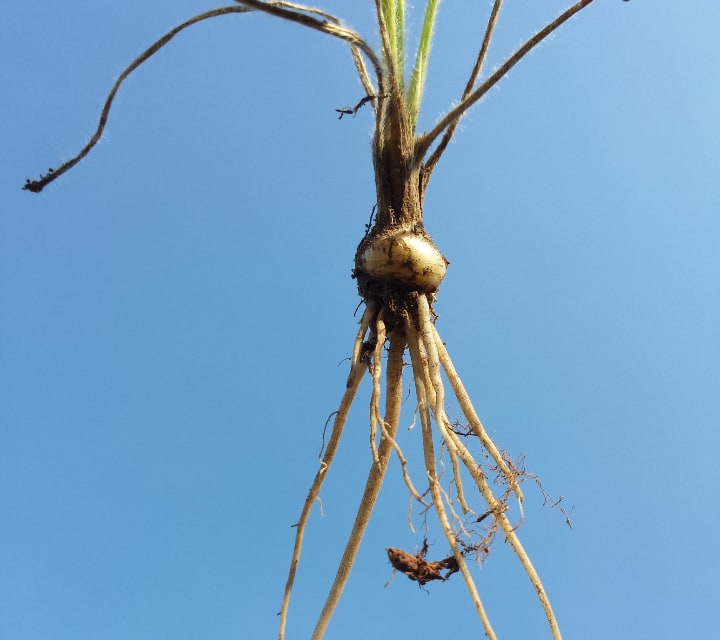
But for most gardeners in most areas, these plants behave as annuals that need to be disposed of after they bloom because moist summer soils cause the tubers to rot.
Idea: You may also try to save the tubers for replanting, but this often leads to mixed results.
Ranunculus Frequently Asked Questions
Still got some questions about this plant? Check out the section below in which we provide answers to some of the most common questions that gardeners ask about buttercups.
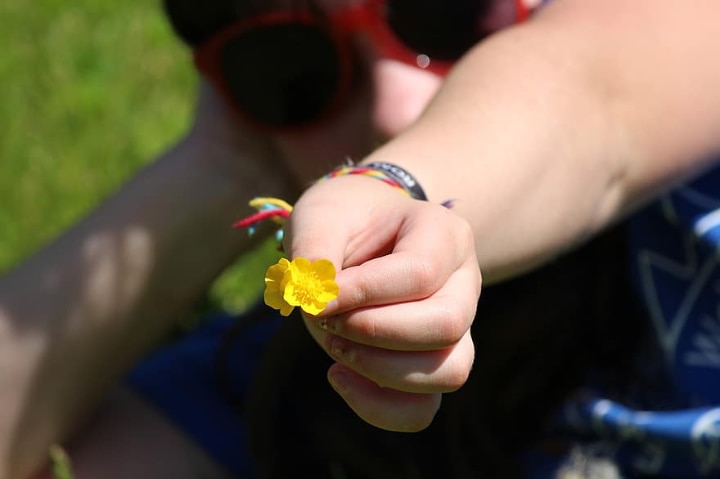
Do ranunculuses grow back every year?
Ranunculus flowers can grow back every year in warm zones with mild winters if they grow in very well-drained soil. But most gardeners treat them as annuals, planting new bulbs in spring to ensure beautiful blooms.
Are ranunculuses annuals or perennials?
Ranunculuses are perennials in regions with mild winters, long and cool springs, and mild summers. Soil temperatures below 10°F will eventually kill the roots, which are also prone to rot in soil that’s not properly drained. Otherwise, these flowers behave as annuals.
Are ranunculuses perennials in the UK?
You can grow ranunculuses as perennials in the UK if you don’t trim back the dead foliage in early fall after the flowers wither. You should also ensure optimal drainage conditions to avoid rot.
Are ranunculuses hard to grow?
Not really. You can grow ranunculuses from bulbs or tubers with ease if you plant them in mid to late fall. These flowers thrive in loamy soil and like mild winters and long, cool springs.
A Bit Tired of Roses and Orchids?
There are flowers that flaunt their beauty with confidence—like orchids or roses. But then there are plants like ranunculuses that teach the eye a quiet kind of beauty, as graceful as it’s natural.
Not all gardeners think about growing them, and that alone is one reason to encourage you to add this plant to your garden palette.
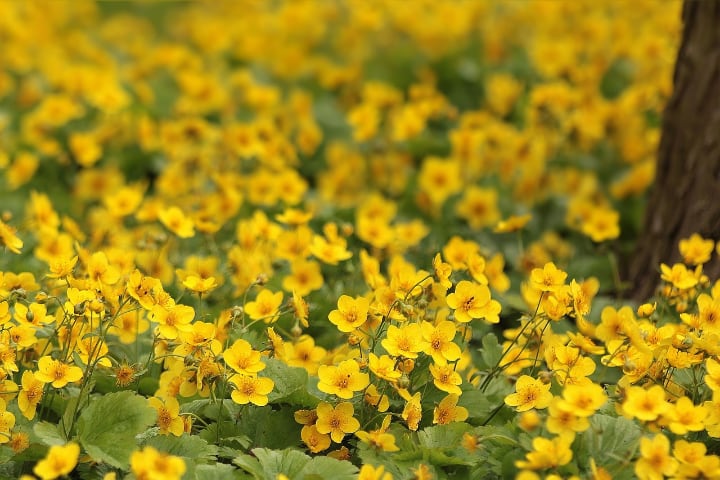
You don’t need much to get started growing these lovely plants. Just make sure to find a sunny spot for the tubers in your garden and follow all the other tips we’ve shared with you.
Do that and in a matter of months you’ll have beautiful buttercups to call your own. Sounds too good to be true? Try it and see for yourself!
PS: If you liked this post, don’t forget to share it with your gardening friends. Spread the word about these wonderful but often underrated flowers!

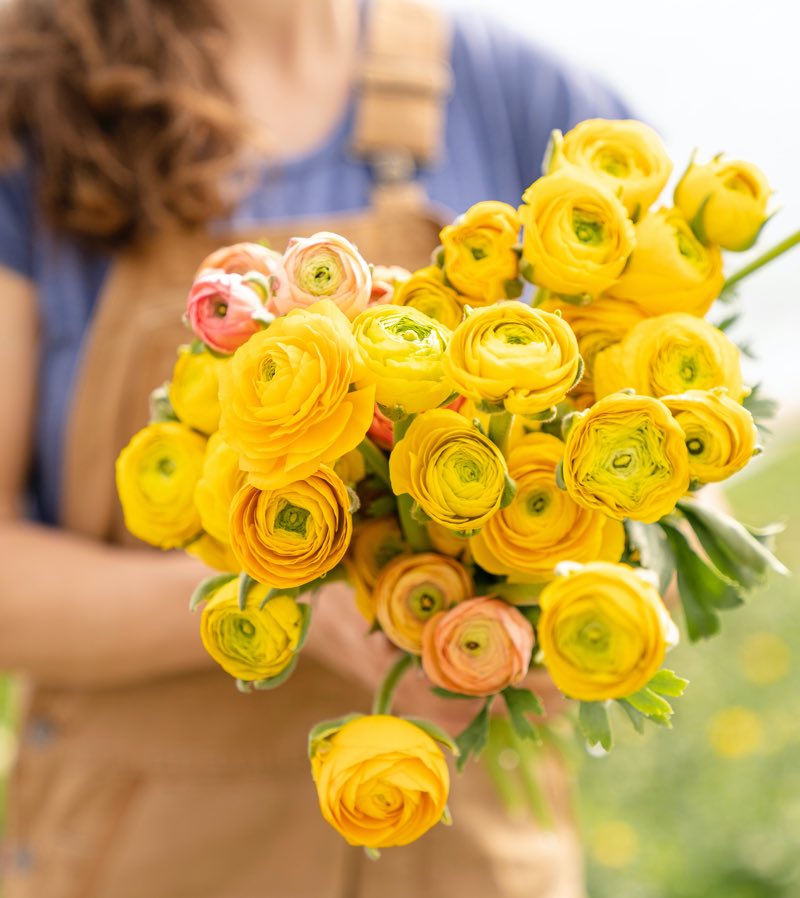
Can I use preen weed preventer in the garden bed with Perspian Buttercup?
I blog frequently and I’d really like to thank you for your content. I know it takes time to research this but your guide on Ranunculus flowers and how to grow these Persian Buttercups have truly helped me in growing my own. Much appreciate. X Femke